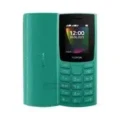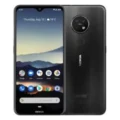Nokia G50


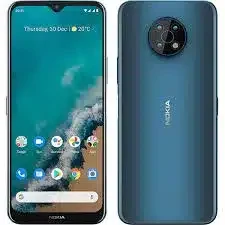
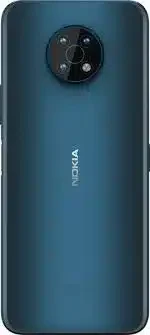
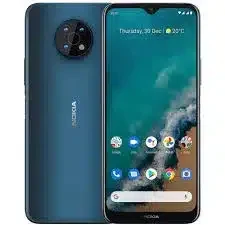
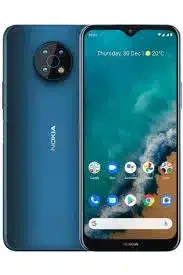
-
: 4/6GB RAM Snapdragon 480 5G
-
: 6.82" 720x1560 pixels
-
: 5000mAh 18W
-
: 48MP 1080p
Introducing the Nokia G50, a cutting-edge smartphone that seamlessly blends style, performance, and affordability. Engineered to meet the demands of the modern user, the Nokia G50 boasts impressive features that make it a standout in the crowded smartphone market.
With a sleek and ergonomic design, it offers a comfortable grip and a stunning visual appeal. The 6.5-inch HD+ display provides a vibrant and immersive viewing experience, making every video, photo, and app come to life with vivid clarity.
Powering it is a robust Qualcomm Snapdragon processor, ensuring smooth multitasking and efficient performance. Whether you’re streaming videos, playing games, or running multiple applications simultaneously, this smartphone delivers a lag-free and responsive user experience.
Capture every moment in crystal-clear detail with the Nokia G50’s triple-camera system. The 48MP main camera, coupled with depth and macro lenses, enables you to unleash your creativity and take stunning photos in various scenarios. The 8MP front-facing camera ensures your selfies are always Instagram-worthy.
What sets it apart is its commitment to longevity. Equipped with a sizable battery, you can enjoy all-day usage without constantly worrying about recharging. Plus, the phone supports fast charging, ensuring you spend more time enjoying your device and less time waiting for it to power up.
Running on the latest Android OS, the Nokia G50 provides access to a world of apps, games, and features, all while maintaining a user-friendly interface. Stay connected, productive, and entertained with the Nokia G50 – a smartphone that prioritizes both performance and affordability.
In summary, the Nokia G50 is a reliable and stylish smartphone that delivers on both aesthetics and functionality. Its impressive features, coupled with an affordable price point, make it a compelling choice for users seeking a well-rounded device. Upgrade your mobile experience with the Nokia G50 today.
Specs
Network
| 2G Network GSM 850 / 900 / 1800 / 1900 - SIM 1 & SIM 2 (dual-SIM) CDMA 800 / 1900 |
GSM 850 / 900 / 1800 / 1900 - SIM 1 & SIM 2 (dual-SIM model only) |
| 3G Network |
HSDPA 850 / 900 / 1900 / 2100 - EU, ROW, China HSDPA 850 / 900 / 1700(AWS) / 1900 / 2100 - LATAM, NA |
| 4G Network |
1, 3, 5, 7, 8, 20, 28, 38, 39, 40, 41 - EU, ROW, China 1, 2, 3, 4, 5, 7, 8, 12, 13, 17, 20, 28, 38, 39, 40, 41, 66 - LATAM 1, 2, 3, 4, 5, 7, 8, 12, 13, 17, 20, 25, 26, 38, 40, 41, 66 - NA |
| 5G Network |
1, 3, 5, 7, 28, 38, 40, 41, 78 SA/NSA/Sub6 - EU, ROW, China 1, 2, 3, 5, 7, 28, 38, 41, 66, 78 SA/NSA/Sub6 - LATAM 2, 5, 7, 38, 41, 66, 71, 78 SA/NSA/Sub6 - NA |
| Speed |
HSPA, LTE, 5G |
LAUNCH
| Announced | September, 2025 |
| Status |
Available. Released 2021, October 13 |
BODY
| Dimensions | 173.8 x 77.7 x 8.9 mm (6.84 x 3.06 x 0.35 in) |
| Weight | 220 g (7.76 oz) |
| SIMs SIM (Subscriber Identity Module) is a small card that contains mobile network subscriber's account information. This allows the phone using the card to attach to a mobile network. The SIM card is most commonly associated with GSM and UMTS mobile networks. Moving a SIM card from one phone to another allows a subscriber to switch mobile phones without having to contact their mobile network carrier. SIM cards can also be used by a phone to store limited amounts of data, such as phone numbers and text messages. |
Single SIM (Nano-SIM) or Dual SIM (Nano-SIM, dual stand-by) |
Display
| Display Type Display Technology => A number of display technologies and types used in mobile phones => TFT (Thin Film Transistor), IPS (In-Place Switching), OLED (Organic Light Emitting Diode), AMOLED (Active-Matrix Organic Light-Emitting Diode), Super AMOLED (an even advanced version of AMOLED), Resistive Touchscreen (Resistive touchscreens contain two layer of conductive material with a very small gap between them which acts as a resistance), Capacitive Touchsceen (Capacitive touchscreen technology consists of a layer of glass coated with a transparent conductor) | IPS LCD, 450 nits (typ) |
| Size | 6.82 inches, 114.2 cm2 (~84.5% screen-to-body ratio) |
| Resolution | 720 x 1560 pixels, 19.5:9 ratio (~252 ppi density) |
PLATFORM
| Operating System OS => Every computer system run on a base software called Operating System (OS). Operating System controls all basic operations of the computer (such as smartphone, PDAs, tablet computers and other handheld devices). The Operating System allows the user to install and run third party applications (apps), apps are used to add new functionality to the device. | Android 11, upgradable to Android 12, planned upgrade to Android 13 |
| Chipset Chipset is a group of integrated circuits designed to perform one or a more dedicated functions, often with real time computing constraints, Popular smartphones are equipped with more advanced embedded chipsets that can do many different tasks depending on their programming. | Qualcomm SM4350 Snapdragon 480 5G (8 nm) |
| CPU CPU (Central Processing Unit) mostly known as processors, CPU processes instructions in order to carry out certain functions that make your device operate properly. Processors are often described as the brain of computers, smartphones and tablets, Smartphones and tablets rely on processors to carry out their every task, Processors are an incredibly important factor in selecting any type of computing device, including your smartphone. | Octa-core (2x2.0 GHz Kryo 460 & 6x1.8 GHz Kryo 460) |
| GPU GPU (Graphics Processing Unit) is a single-chip processor designed to rapidly manipulate and alter memory to accelerate the creation of images in a frame buffer intended for output to a display, This includes things such as lighting effects, object transformations, and 3D motion. | Adreno 619 |
MEMORY
| Card Slot Memory Card Slot is a special slot for inserting a memory card. Memory cards allow you to expand the phone's built-in memory, A memory card (sometimes called a flash memory card or a storage card) is a small storage medium used to store data such as text, pictures, audio, and video, for use on small, portable or remote computing devices such as mobile phones, mp3 players, digital cameras. | microSDXC |
| Internal | 64GB 4GB RAM, 128GB 4GB RAM, 128GB 6GB RAM |
MAIN CAMERA
| Cameras Specs Today’s smartphones come equipped with a very comprehensive set of camera related specifications. Our smartphone, for many of us, has become our primary camera due to it being the one we always have with us. |
48 MP, f/1.8, (wide), PDAF 5 MP, (ultrawide) 2 MP, (depth) |
| Video | 1080p@30fps |
| Camera Features | LED flash, HDR, panorama |
SELFIE CAMERA
| Cameras Specs Today’s smartphones come equipped with a very comprehensive set of camera related specifications. Our smartphone, for many of us, has become our primary camera due to it being the one we always have with us. |
8 MP, (wide) |
| Video | 1080p@30fps |
SOUND
| Loudspeaker | Yes |
| 3.5mm jack |
Yes |
COMMS
| WLAN |
Wi-Fi 802.11 a/b/g/n/ac/6, dual-band |
| Positioning |
GPS, GALILEO, BDS |
| Bluetooth Bluetooth is a wireless communications technology for exchanging data between mobile phones, headsets, computers and other network devices over short distances without wires, Bluetooth technology was primarily designed to support simple wireless networking of personal consumer devices. | 5.0, A2DP, LE |
| Infrared Infrared connectivity is an old wireless technology used to connect two electronic devices. It uses a beam of infrared light to transmit information and so requires direct line of sight and operates only at close range. | |
| USB | USB Type-C 2.0, OTG |
| NFC NFC (Near field communication) is a set of standards for smartphones and similar devices to establish peer-to-peer radio communications with each other by touching them together or bringing them into proximity, usually no more than a few inches. | |
| Radio |
Features
| Sensors Sensors are electronic components that detects and responds to some type of input from the physical environment. The specific input could be light, heat, motion, moisture, pressure and location, The output is generally a signal that is converted to use in computing systems, a location sensor, such as a GPS receiver is able to detect current location of your electronic device. |
Fingerprint (side-mounted), accelerometer, gyro, proximity, compass |
BATTERY
| Battery Type Battery Type => Cell phones run on various kinds of batteries depending on the manufacturer, phone size or shape and features. There are basically four types of cell phone batteries => Lithium Polymer, Lithium Ion, Nickel Metal Hydride and Nickel Cadmium. | Li-Poly (Lithium Polymer) |
| Capacity Battery Capacity is a measure (typically in Amp-hr) of the charge stored by the battery, and is determined by the mass of active material contained in the battery. The battery capacity represents the maximum amount of energy that can be extracted from the battery under certain conditions. | 5000 mAh |
| Placement | non-removable |
| Charging The functionality responsible for recharging batteries in portable devices, such as mobile phones, significantly influences both battery lifespan and the practicality of daily product usage. The charging process, encompassing factors like voltage, current, and completion actions, is contingent upon the battery's size and type. Contemporary battery chargers dynamically adjust charging parameters based on the battery's current charging state. Charging an empty battery poses no safety risk, allowing for a quicker charging process. Consequently, many charging speed benchmarks, including ours, specify the battery level achieved after a 30-minute session on an empty battery. Standard chargers with a power output of 5V/1A, equivalent to 5W, serve as a baseline, with anything surpassing this speed classified as quick or fast charging. | 18W wired |
MISC
| Colors |
Midnight Sun, Ocean Blue |
| Model | TA-1358, TA-1390, TA-1370, TA-1367, TA-1361 |
| SAR SAR (Specific absorption rate): Each GSM handset has a radio transmitter and receiver in order to operate in the wireless GSM network. That transceiver is manufactured so that when used next to the ear and when worn on the belt, it won't exceed the limits for exposure to radio frequency energy set by the authorities. The authorities in question here are the Federal Communications Commission (FCC) of the U.S. Government, Industry Canada of the Canadian Government (IC), and the Council of the European Union. |
0.79 W/kg (head) 0.96 W/kg (body) |
| SAR EU Each GSM handset has a radio transmitter and receiver in order to operate in the wireless GSM network. That transceiver is manufactured so that when used next to the ear and when worn on the belt, it won't exceed the limits for exposure to radio frequency energy set by the authorities. The authorities in question here are the Federal Communications Commission (FCC) of the U.S. Government, Industry Canada of the Canadian Government (IC), and the Council of the European Union. |
1.15 W/kg (head) 1.13 W/kg (body) |
| Price |
About 180 EUR |
TESTS
Reviews
Disclaimer Note
We strive to maintain accurate and up-to-date content on our website for general information purposes only. Please refrain from using the material for business, legal, or any other decisions.


